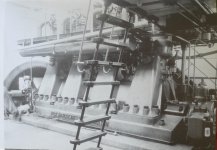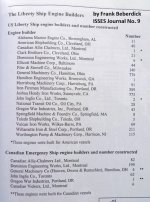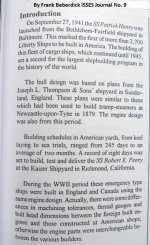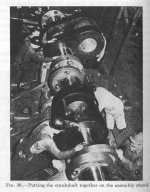Tyrone Shoelaces
Diamond
- Joined
- Apr 19, 2006
- Location
- Manchester, England
I remembered that I have a book called 'River-class Frigates and the Battle of the Atlantic', by Brian Lavery. The ships were designed in haste during the winter of 1940/1. They were simple and uncomfortable. There's a photo of one of the four-cylinder triple-expansion engines, and I was amazed to see that it is almost identical to the one in the last photo in post #35!
I won't copy the photo from the book, but the only noticable difference is that it doesn't have the crankcase splash guards seen on Billmac's photo. However, here they are in this 1943 photo! :-
INTERIOR STUDIES ON BOARD A FRIGATE. 5 JULY 1943, ON BOARD THE RIVER CLASS FRIGATE, HMS MOURNE, AT LIVERPOOL. | Imperial War Museums
I rest my case!
Those things on the side are lubricators, by the way.
Billmac's photo is clearly taken in a dark shop, so it is consistent with wartime blackout.
I wasn't satisfied about the dates of the other photos, though, which weren't in a blacked-out shop. By another stroke of luck, I've found that Hick's had made a three-cylinder triple-expansion engine for the Ministry of War Transport, for a "C Type" wartime standard cargo ship, built by the Shipbuilding Corporation in Newcastle in 1947 and launched as the 'Empire Birdsay'. Later renamed SS Lokoja Palm, then various other names, and scrapped in 1971.
Zarian 1947
On edit: In 1944 they supplied a three-cylinder triple-expansion engine for the Ministry of War Transport's 'Empire Grey' (Readhead & Sons Ltd, South Shields).
Empire Grey 1944
Not only that but they look just like “ T&K “ lubricators. The glass tubes were filled with glycerine if I remember rightly and you could see the lubricating oil slowly making its way up the outside of a copper wire that was in the middle of the glass tube.
Regards Tyrone.
















